The Economics and Statistics Division maintains archives of previous publications for accountability purposes, but makes no updates to keep these documents current with the latest data revisions from Statistics Canada. As a result, information in older documents may not be accurate. Please exercise caution when referring to older documents. For the latest information and historical data, please contact the individual listed to the right.
<--- Return to Archive
For additional information relating to this article, please contact:
February 28, 2023CANADIAN ECONOMIC ACCOUNTS Q4 & ANNUAL 2022 
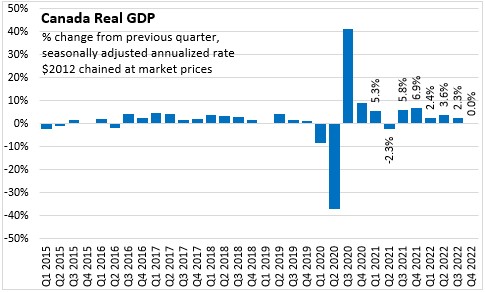
Canada’s Real Gross Domestic Product (GDP) remained unchanged (all figures seasonally adjusted at annual rates) in the fourth quarter of 2022, following five consecutive quarterly increases. Compared to pre-pandemic Q4 2019, the Canadian economy was 2.9% larger in Q4 2022.
Statistics Canada notes that growth in the quarter was moderation in business investment in inventories accumulation as well as declines in business investment in machinery and equipment and residential structures. Household consumption, government spending, and exports were up, and imports were down. Final domestic demand edged up in Q4 2022.
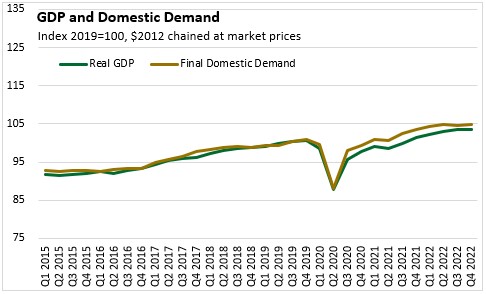
Household consumption growth increased 2.0% in Q4. Widespread increase in durable goods spending accounted for much of the increase. Growth in services slowed down from Q3 to Q4.
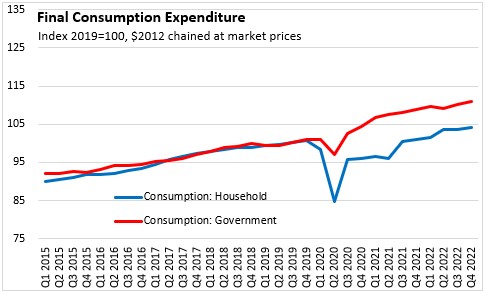
Residential investment contracted for the third consecutive quarter, falling at a seasonally adjusted annualized rate of 8.8% as new construction and renovation activities declined amid rising interest rates. Government investment increased by 11.9%.
Expenditures on the LNG Canada project kept investment in engineering structures rising in Q4. Business investment for machinery and equipment declined
on lower computer, industrial machinery, aircraft and other transportation equipment.
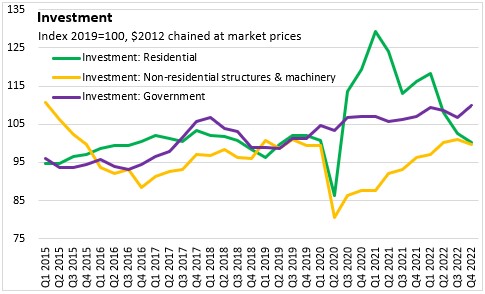
Imports decreased by a seasonally adjusted annualized rate of 12.0% in Q4 because of declines in pharmaceutical and medicinal products, computers and computer peripherals, and electronic and electrical parts.
Exports grew by 0.8% on rising wheat, canola products, and travel services.
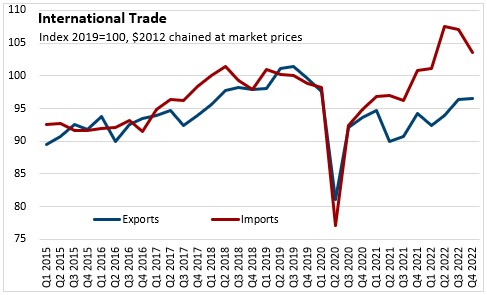
Inventory accumulation slowed to $22.3 billion in Q4, following a record high level in additions to inventory in the second and third quarter of 2022. Statistics Canada reported that the slower increases were in manufacturing goods, wholesale trade and retail trade sectors.
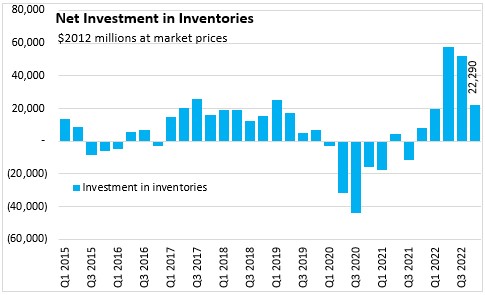
The terms-of-trade (ratio of price of exports to price of imports) decreased in Q4 driven by decline in prices of exported goods.
The overall GDP deflator (reflects overall price of domestically produced goods and services) was down 2.8% on annualized basis, the second consecutive quarterly decline.
Nominal GDP decreased at a seasonally adjusted annualized rate of 2.7% in Q4, following the 2.5% decline in Q3 2022.
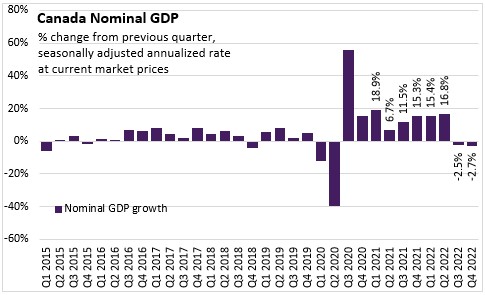
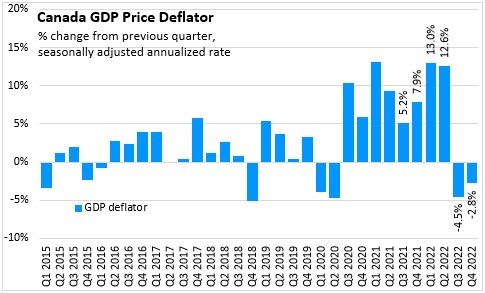
Employee compensation (measured in current prices, not real volumes) was up by a seasonally adjusted annualized rate of 4.7% in Q4. Statistics Canada noted that largest increases in compensation were in construction, professional and personal services, and educational services.
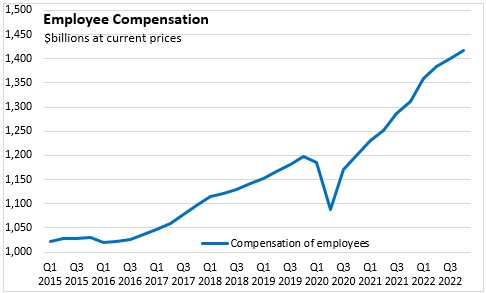
Lower revenues for energy companies decelerated net operating surplus of corporations, though it remained elevated. Net mixed income continued to increase in Q4.
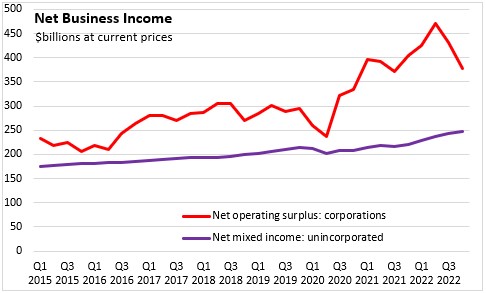
With slower growth in nominal household consumption expenditures, the household savings rate increased to 6.0% of disposable income in Q4.
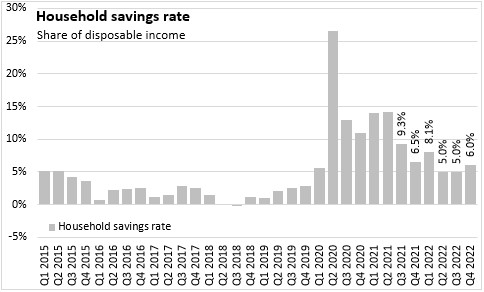
ANNUAL – 2022
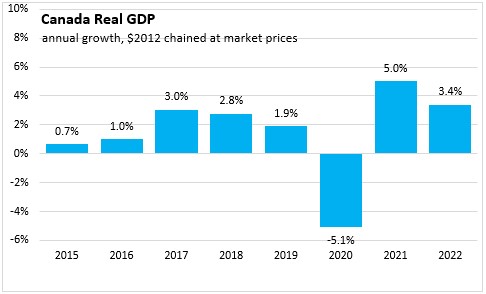
Real GDP in Canada increased 3.4% in 2022, following a 5.0% increase in 2021. Higher household spending on services supported by the relaxation of lockdown restrictions in the first half of the year as well as increased non-residential structures and machinery and equipment, led by the LNG Canada project provided the largest contributions to the GDP growth in 2022.
Household consumption increased 4.8% following an increase of 5.1% in 2021.
Business capital investment declined 2.2% in 2022. Residential structures decreased 11.1%. Non-residential structures, machinery and equipment investment was up 7.8%.
Export volume increased 2.6% with higher exports of goods (+1.8%) and services (+6.3%) in 2022. Import volumes increased 7.2% with both higher imports of goods and services.
Compensation of employees increased 9.5% in 2022.
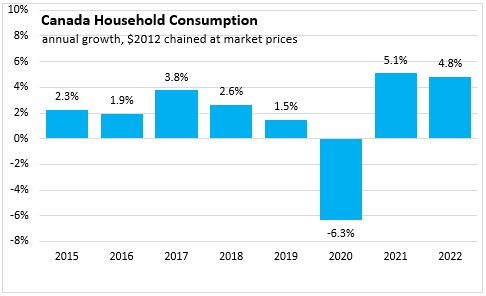

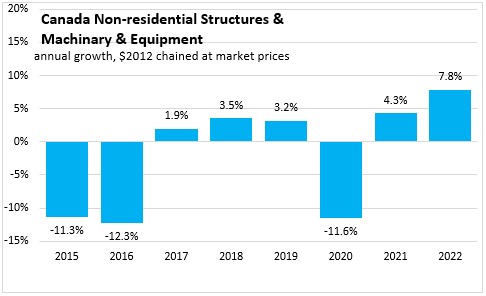
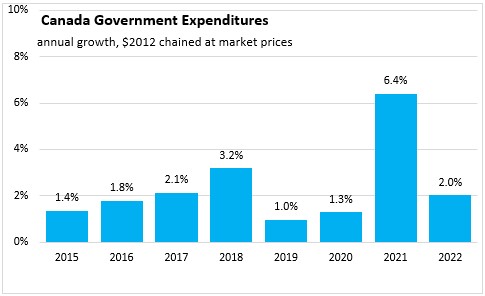
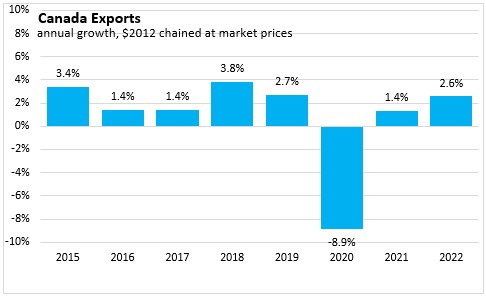
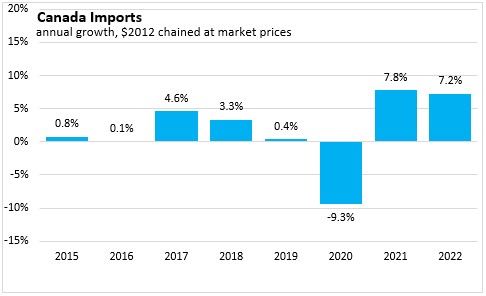

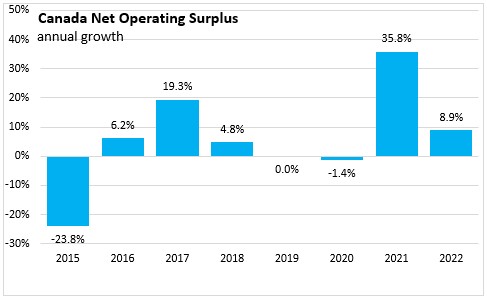
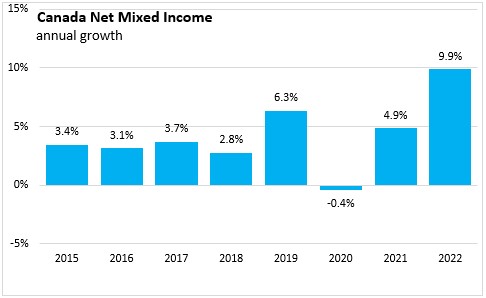
Source: Statistics Canada. Gross domestic product, income and expenditure, second quarter 2020, Table 36-10-0103-01 Gross domestic product, income-based, quarterly (x 1,000,000), Table 36-10-0104-01 Gross domestic product, expenditure-based, Canada, quarterly (x 1,000,000), Table 36-10-0111-01 Current and capital accounts - National, Canada, quarterly
<--- Return to Archive